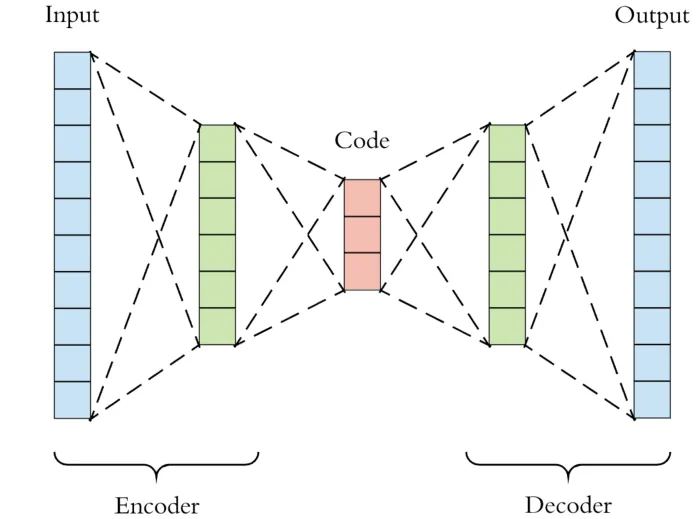In the previous post, we explained how we can reduce the dimensions by applying PCA and t-SNE and how we can apply Non-Negative Matrix Factorization for the same scope. In this post, we will provide a concrete example of how we can apply Autoeconders for Dimensionality Reduction. We will work with Python and TensorFlow 2.x.
Autoencoders on MNIST Dataset
We will use the MNIST dataset of TensorFlow, where the images are 28 x 28 dimensions, in other words, if we flatten the dimensions, we are dealing with 784 dimensions. Our goal is to reduce the dimensions, from 784 to 2, by including as much information as possible.
Let’s get our hands dirty!
from tensorflow.keras.models import Sequential
from tensorflow.keras.layers import Dense,Flatten,Reshape
from tensorflow.keras.optimizers import SGD
from tensorflow.keras.datasets import mnist
(X_train, y_train), (X_test, y_test) = mnist.load_data()
X_train = X_train/255.0 X_test = X_test/255.0
#### Encoder
encoder = Sequential()
encoder.add(Flatten(input_shape=[28,28])) encoder.add(Dense(400,activation="relu")) encoder.add(Dense(200,activation="relu")) encoder.add(Dense(100,activation="relu")) encoder.add(Dense(50,activation="relu")) encoder.add(Dense(2,activation="relu"))
#### Decoder
decoder = Sequential()
decoder.add(Dense(50,input_shape=[2],activation='relu')) decoder.add(Dense(100,activation='relu')) decoder.add(Dense(200,activation='relu')) decoder.add(Dense(400,activation='relu'))
decoder.add(Dense(28 * 28, activation="relu")) decoder.add(Reshape([28, 28]))
#### Autoencoder
autoencoder = Sequential([encoder,decoder]) autoencoder.compile(loss="mse") autoencoder.fit(X_train,X_train,epochs=50)
encoded_2dim = encoder.predict(X_train)
## The 2D
AE = pd.DataFrame(encoded_2dim, columns = ['X1', 'X2'])
AE['target'] = y_train
sns.lmplot(x='X1', y='X2', data=AE, hue='target', fit_reg=False, size=10)
#autoencoder #dimensionality-reduction #data-science #data-visualization #tensorflow

1.75 GEEK